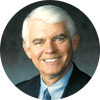"What Do We Mean When We Say...?" In the mid-1980s, what was then known as the Pacific Consortium for Chiropractic Research made significant accomplishments. In particular, it provided a forum for the profession to talk about itself. This forum was the CORE Conference held annually in conjunction with the convention of the California Chiropractic Association. Each year we set a theme and invited papers from the research community and practitioners. The goal was to promote dialogue. One notable CORE Conference involved papers and lively discussion about chiropractic technique. The Consortium and the CORE Conference are now historical remembrances, but their emergence indicated a phase in the maturation of the profession.
Not to be shortchanged, the Foundation for Chiropractic Education and Research (FCER) began to sponsor regular meetings of the research directors from all the colleges in the late 1970s. These early efforts expanded into what we now recognize as the International Conference on Spinal Manipulation (ICSM). FCER is to be congratulated for the continuance of this effort to bring together bright minds of the profession. The presentations at this conference, and the many others now held in the profession, become the material that is published in journals of chiropractic. These conferences and publications are further evidence of the profession's maturity.
A highly touted effort has been the ACC Paradigm statement. The current presidents of chiropractic colleges belonging to the ACC (presidents of the North American colleges) forged two position papers now referred to as the ACC Paradigm. During several workshops, the presidents hammered out each individual statement until is was acceptable to all. This document has met the approval of most major bodies of the profession in North America and is now moving through the international community. For all the college presidents in North America to create and agree on a document that defined the profession had never before been achieved. This is yet another example of a maturing profession.
The development of practice guidelines was and continues to be evidence of the maturing process. Practice guidelines bring us closer to the dilemma of defining, "What we mean when we say..." and thus are fraught with challenges. Maturation is not one continual process of successful forward movement. Over the years, the profession has been active in the production of practice guidelines. Well before the "Mercy Guidelines" were produced, several states and other bodies had developed their own guidelines. After "Mercy," other large bodies on an international level adopted practice guidelines. Guideline documents are based on a consensus rendered by a noted body of authorities that has meticulously reviewed the weight of evidence. Consensus building is elaborate and grueling, but has experienced a lack of profession-wide acceptance, resulting in the production of guidelines that are in conflict with one another.
A final example of our maturity was the establishment of our educational standards. The Council on Chiropractic Education (CCE) continues to engage in this dynamic process. As the profession has grown over the years, the CCE has worked diligently to refine the standards.
The profession has not been negligent in defining the meaning of chiropractic. Publication of private books and articles, both in and outside the profession, has engaged in the development of meaning. We should applaud what has been done and continue to engage in this process. Thus, the goal of my articles in Dynamic Chiropractic for 2001 will be to contribute to the meaning dialogue. A consensus will not necessarily be my intent. On the contrary, my articles will be designed to set forth the arguments from all perspectives that we might be more focused on where we differ, as well as where we agree. My goal is to contribute to the process, not to conclude it.
To accomplish these goals, I invite you to participate with me. We must decide what terms or ideas we wish to address in the development of meaning. I therefore request that you send to me suggestions on what you feel are critical ideas or terms that need to be addressed. As you submit your ideas, include your definitions of meaning. Site your source of references or simply indicate that you are sharing an opinion. Let me know if I can quote you or if you would rather remain anonymous. I will ask that you communicate with me through the mechanism set up by Dynamic Chiropractic's web site (http://www.ChiroWeb.com/columnist/meemoophil ). No ideas will be ridiculed, but disrespectful and unprofessional comments will be ignored.
I will conclude this request for feedback with a springboard list of some ideas or "key words" for consideration:
• Subluxation/Vertebral Subluxation Complex
• Diagnosis
• Doctor/Physician
• Primary Care
• Separate and Distinct/Unique
• Holistic
• Vitalistic
• Patient-Centered
• Principled Chiropractic
• Subluxation-Based
• Chiropractic Philosophy/Philosophy of Chiropractic
Reed Phillips,DC,PhD
President, Los Angeles
College of Chiropractic
Click here for previous articles by Reed Phillips, DC, PhD.





